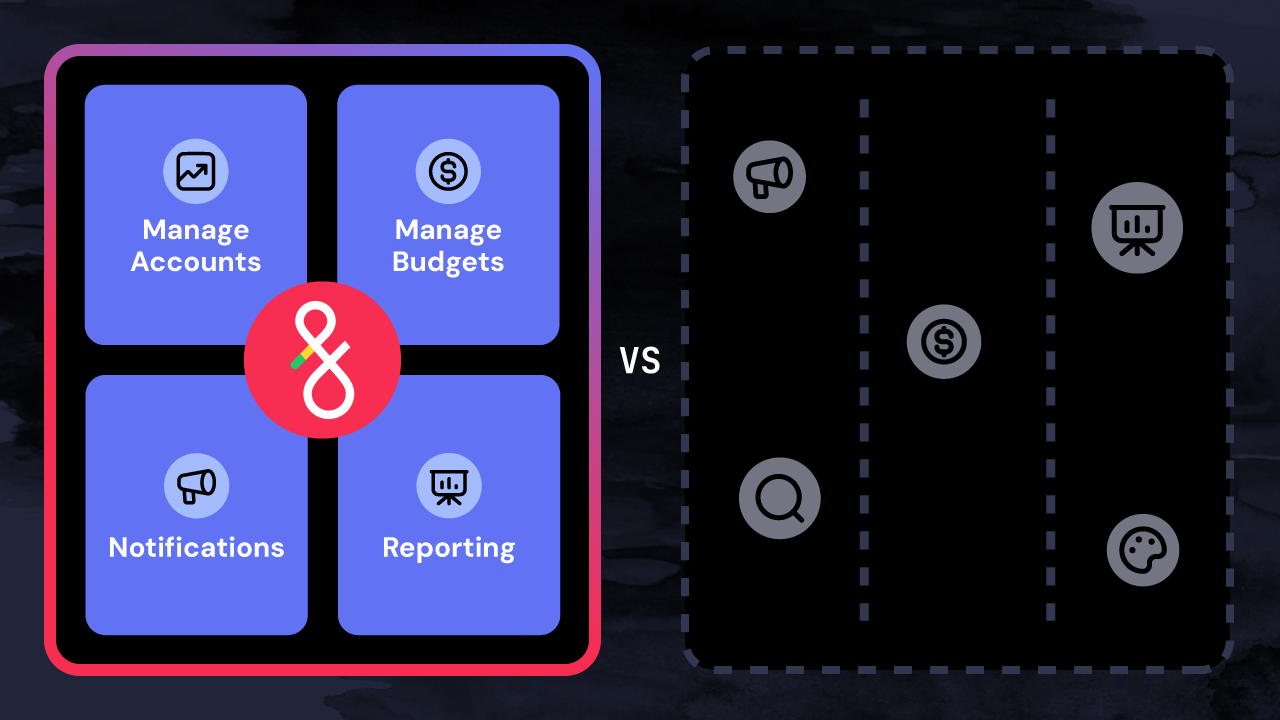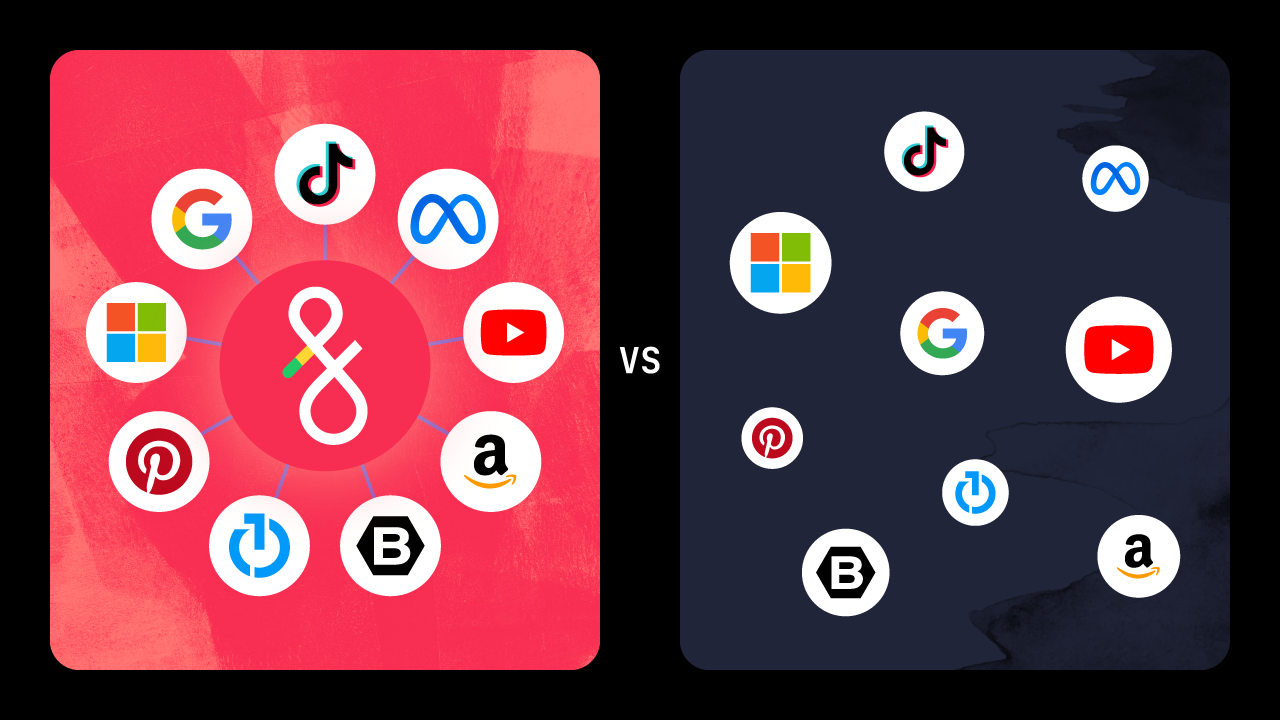In today’s tumultuous business environment, organizations no longer have a choice in how efficient they choose to be. The ones relying on manual processes to onboard and set up new accounts, build and manage campaign ads, monitor email and chat and conduct performance reviews are spending 100% of their bandwidth—if not more—on tedious, repetitive tasks.
This way of doing business leaves zero time for the strategic, forward-thinking initiatives that will keep your clients, your clients in the long run. If you’re considering automation, but not fully confident your business is ready to take the next step, it’s time to take a real look at the impact of manual, repetitive tasks and the inevitable costs of not automating your business.
You Can’t Hire Your Way to Scale
There’s a dozen and a half common pitfalls that come to mind when thinking about staffing your team every time your strategy evolves or you start growing your client count. The truth is: it’s not realistic or scalable to hire for fluctuating demands. Couple this with a staggering increase in labor costs and you have a wildly unrealistic combination once you realize your staffing woes can be solved with automation. Instead of disproportionality staffing your team for varying demands, or paying salaries for tasks that can ultimately be automated, what if you could shift over the high-value cognitive tasks to the existing staff you have today and automate the critical—yet low cognition—tasks that are eating up the precious hours in the workday?
Lastly, consider restaffing once attrition naturally occurs on your team. It’s inevitable that people will come and go—with automation, you won’t necessarily have to fill that role or the gap in workflows down the line once that does happen.
You Can’t Keep Up with Complex Campaigns
Digital advertising campaigns are complex—and you guessed it, time consuming. Scaling advertising campaigns puts a lot of strain on your most valuable resources: your people. It’s not sustainable to continue to stretch client ratios per person or demand late night and weekend hours. If the last three years have taught us anything in digital advertising, it’s that people want a better quality of life in the workplace: flexibility and work they truly value.
Using Fluency’s Robotic Process Automation for Advertising (RPA4A), our clients have seen massive time savings as a result of automating critical workflows. Before automation, some of our clients in the Multi-Family and Automotive space, for example, were spending at least one hour manually building out rooftops in search advertising. With automation (more specifically, Fluency) they can now pair that time down to under 5 minutes—thus leaving more time for the strategic, high-cognitive work we mention above.
Here’s just a few of the ways your organization can automate critical workflows within your digital advertising ecosystem:
- Budget management: In addition to automating single- and cross-channel optimization and over-and under-spend protection, automation minimizes the effort demanded by budget pacing—a task that analysts dread but were previously helpless to escape.
- Account launches: By automating the process of data ingestion, analysts can go from spending weeks trying to import and organize massive data catalogs (like inventories for car dealers,) to having an easily customizable feed at their fingertips.
- Account optimization: Automation allows for changes needed across an entire portfolio, such as compliance or manufacturer specials. For short-term messaging adjustments, RPA4A offers a quick and easy way to process unique requests. Blueprints, a Fluency exclusive, allows users to make an improvement on one account and exponentially multiple to every account.
To summarize: automation gives digital advertising teams the ability to exponentially scale their expertise across an unlimited number of clients and campaigns.
The Cost of Doing Things Manually May Mean You Can’t Satisfy Your Customers
Technologies will continue to advance and ChatGPT won’t be the only AI-based solution your clients will want access to. As your clients’ needs evolve, your competitive advantage is ultimately determined by whether or not you can satisfy and meet those demands. When client retention is at risk due to limited capabilities or outdated offerings, the harsh reality is that your client portfolio could dwindle as they learn that other partners can make things more effective.
As you lose customers to a lack of capabilities, it creates a domino effect across your business. Less revenue equates to a loss in sales and profits and a loss in sales and profits creates a vicious cycle in how organizations attempt to grapple at saving revenue by laying off essential members of your team, a decrease in necessary resources—like training—and the like.
Imagine if you did have the capabilities to service your customers’ evolving needs? In addition to keeping revenue and customer sentiment high, you’ll also have the opportunity to position yourself as a thought leader, as you’ll have the tooling, software and processes that may be better than the competition—or at least on par. Lastly, another thing to consider is when you have overworked teams with unrealistic account loads or a responsibility of taking care of mentally draining tasks, you may have an issue where your team is making mistakes more frequently. This also connects back to the ability to satisfy your customers. If you have team members making mistakes—overspending, forgetting about expired ads, etc.—you run the risk of losing credibility.
The Challenge of Manually Predicting Your Business
Another piece to consider is how manual processes and spreadsheets make it more challenging for businesses to keep up with internal capacity planning. Automation makes it quick and easy to get insight into staffing projections and overall needs for the organization. Theoretically, businesses wouldn't always need to staff for an open role, but could identify the times where they may need to based on how much automation they’re leveraging within their business. Without automation, businesses may be relying on inaccurate projections and reporting, and unnecessarily hiring for a role they could have just automated.
If agencies have automation and better insight into their workflows and operations, they’re better positioned to create cohesion and consistency among departments as new clients come in—thus setting more realistic initiatives, creating alignment in internal stakeholders, and clearly defining KPIs. The result? More time for high-level strategies, and as a bonus, sentiment improvement and an upgrade in the quality of life associated with the job.
Fluency Is Your Partner for Automation
We’ve just scratched the surface of how not automating your business could be costing you in the long run. You may have heard our team say this already, but it’s worth noting again: the business-as-usual agency model is a company killer. If you’re not automating, you’re ultimately going to get left behind. Once you’re ready to make a use case for automation, you’ll need a partner to empower your business with the right software and tooling. Fluency can do exactly that—helping your business to dramatically cut costs, streamline its processes and improve both employee and client sentiment. Get in touch with our team to learn more.






